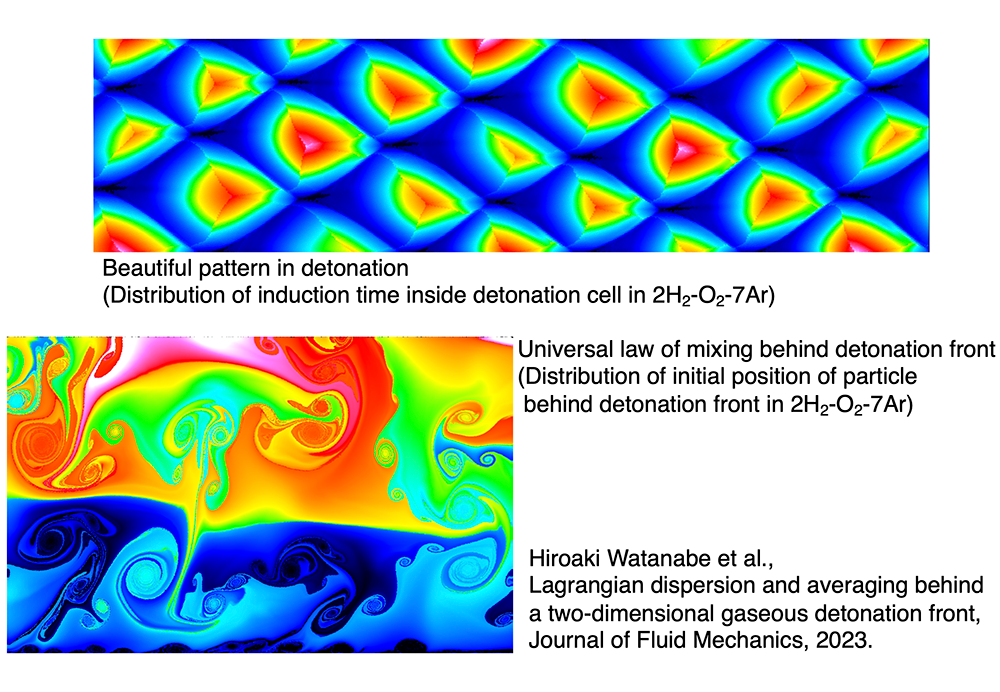Detonation is a supersonic premixed combustion wave, which consists of a leading shock wave coupled with a reaction zone. The classical model of detonation is consisted of steady one-dimensional structure. However, in the reality, detonation wave exhibits an unsteady and complex multi-dimensional cellular structure. The coupling of the chemical reactions and the hydrodynamic instability is vital for the propagation of cellular detonation. In order to deepen our knowledge for cellular detonation, we explore chemical and hydrodynamic structure of cellular gaseous detonation in a straight channel by the two-dimensional simulation with particle tracking method. The introduction of massless particles in the flow field enabled us to analyze their trajectory and the time history of the chemical species and thermodynamic properties in detail.
This talk consists of the two parts. In the first part of this talk, we focus on the Lagrangian dispersion behind the detonation front. The distance traveled by massless Lagrangian particle behind the front and the time from shock passage were recorded in the course of the simulations. The degree of the dispersion and the relative dispersion were evaluated. The dispersion of the particles was promoted by the fluctuation of the leading shock and its curvature, the presence of the reaction front, and to a lesser extent transverse waves, jets and vortex motion. After a transient where the fading transverse waves and the vortical motions coming from jets and slip lines were present, the relative dispersion relaxed towards a Richardson-Obukhov regime, especially for the unstable case.
In the second part of this talk, we analyze the distribution of the chemical and hydrodynamic time scales inside the cellular structure. The thermicity, which denotes the effect of the chemical reaction on the flow velocity and is related with the chemical reaction rate, was recorded for each particle during the simulations. This procedure enables to record the induction time and reaction time inside the cell from Lagrangian point of view for the first time. Due to the decaying leading shock front and the transverse wave structure, the chemical and hydrodynamic times were non-uniform. The induction time became maximum around the center of the cell in the second part for the weakly unstable mixture. The reaction time also became shorter in the second part of the cell due to higher initial pressure by the transverse wave. The induction process completed within the half of the cell cycle and the transverse waves played a key role in enhancing the chemical reaction even in the weakly unstable cellular detonation.
Prochains évènements
Retour à l'agendaSéminaire Équipe TriboLub
Séminaire + Réunion d'équipe

